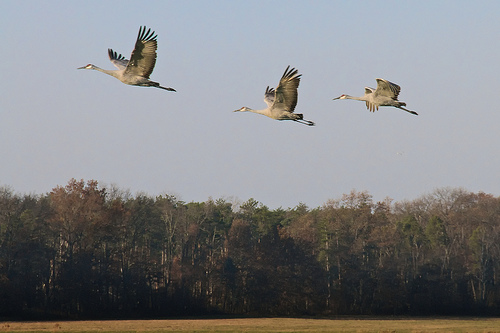Now that we've displaced nature, we have to rebuild it

As part of a larger conservation project, some farms along the sandhill crane migration line in California are encouraging and allowing the cranes to stop and forage on their farms. It's a far cry from the more standard practice of shooting a shotgun to make noise and scare away large groups of the elegant birds.
I think this is amazing. One of the craziest aspects of the rise of humanity is that we've disrupted the natural cycles of essentially everything around us. We redirect or block rivers, we grow an excess of certain crops, we kill certain animals and bugs we don't like, etc.
But nature, which of course humans are inextricably part of, has always found its own balance. We've displaced that balance, especially in America with our relentless expansion westward and then into the suburban frontier. At some point, we're physically going to run out of room or cross the carrying capacity, this we know.
But the other, more exciting option is to actually reintegrate ourselves into nature. For example, I've been writing about urban gardens this week, and the idea of turning rooftops and vacant lots into gardens is not only good for our human nature, it's good for the planet. Turning suburbs into small towns, building future developments around where water already is instead of trying to divert the water… there are lots of options.
Designating specific farms along migratory bird routes as safe places for those birds is a huge nod to the fact that nature does not have the same agenda as humans. And with 95 percent of the other wetlands in California's Central Valley being lost to farming, this is literally their last chance.
And it's happening.
On a final semantic note, it's interesting that the organization responsible for this is considered a "Nature Preserve," when really, rather than preserving something, they are looking far forward and enabling things to grow and change as they would like.
Image courtesy of Stephen A. Wolfe via flickr

2 comments